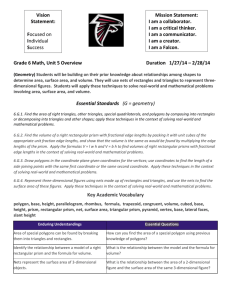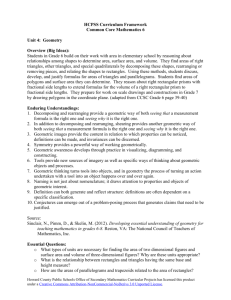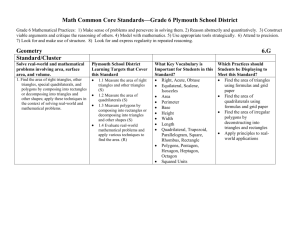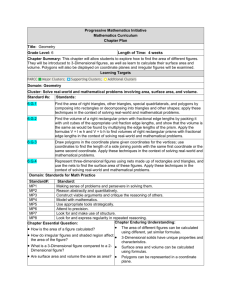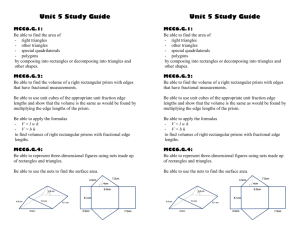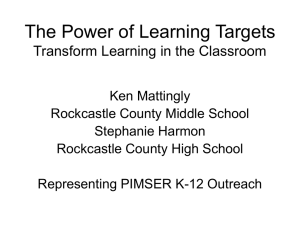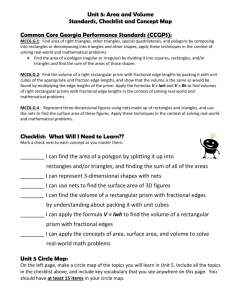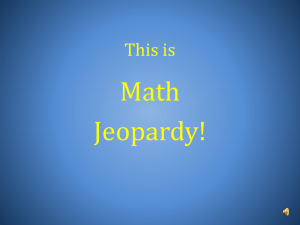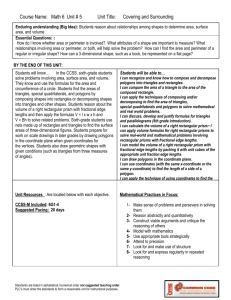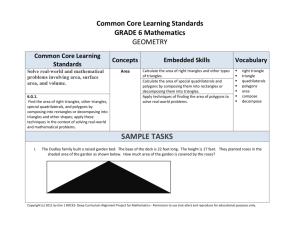Common Core Math Standards
advertisement
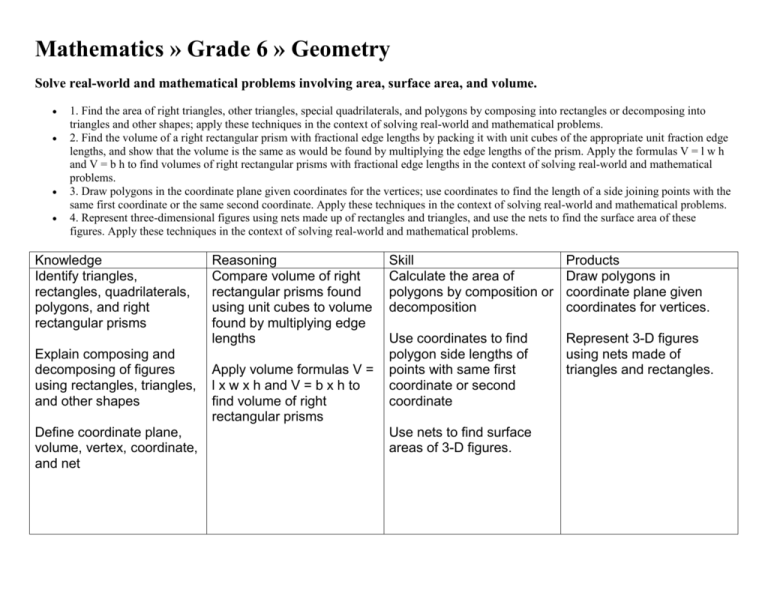
Mathematics » Grade 6 » Geometry Solve real-world and mathematical problems involving area, surface area, and volume. 1. Find the area of right triangles, other triangles, special quadrilaterals, and polygons by composing into rectangles or decomposing into triangles and other shapes; apply these techniques in the context of solving real-world and mathematical problems. 2. Find the volume of a right rectangular prism with fractional edge lengths by packing it with unit cubes of the appropriate unit fraction edge lengths, and show that the volume is the same as would be found by multiplying the edge lengths of the prism. Apply the formulas V = l w h and V = b h to find volumes of right rectangular prisms with fractional edge lengths in the context of solving real-world and mathematical problems. 3. Draw polygons in the coordinate plane given coordinates for the vertices; use coordinates to find the length of a side joining points with the same first coordinate or the same second coordinate. Apply these techniques in the context of solving real-world and mathematical problems. 4. Represent three-dimensional figures using nets made up of rectangles and triangles, and use the nets to find the surface area of these figures. Apply these techniques in the context of solving real-world and mathematical problems. Knowledge Identify triangles, rectangles, quadrilaterals, polygons, and right rectangular prisms Explain composing and decomposing of figures using rectangles, triangles, and other shapes Define coordinate plane, volume, vertex, coordinate, and net Reasoning Compare volume of right rectangular prisms found using unit cubes to volume found by multiplying edge lengths Apply volume formulas V = l x w x h and V = b x h to find volume of right rectangular prisms Skill Calculate the area of polygons by composition or decomposition Products Draw polygons in coordinate plane given coordinates for vertices. Use coordinates to find polygon side lengths of points with same first coordinate or second coordinate Represent 3-D figures using nets made of triangles and rectangles. Use nets to find surface areas of 3-D figures. Geometry Student Friendly Learning Targets 1. I can identify triangles, rectangles, quadrilaterals, polygons, and right rectangular prisms. 2. I can explain composing figures using rectangles, triangles, and other shapes. This means I can combine figures to create a rectangle, triangle, or other shape. 3. I can explain decomposing figures into rectangles, triangles, and other shapes. This means I can break a figure down into triangles, rectangles, or other shapes. 4. I can define coordinate, coordinate plane, vertex, volume, and net. 5. I can compare a right rectangular prism’s volume found by using unit cubes, to its volume found by multiplying edge lengths. 6. I can apply formulas for finding volume (V = l x w x h and V = b x h) to right rectangular prisms. 7. I can calculate the area of a polygon using composition or decomposition. This means I can find the area by either combining polygons to make a simpler shape, or breaking the polygon down into simpler shapes. 8. I can find the side length of a polygon on a coordinate grid that has either the same first coordinate or same second coordinate. 9. I can use nets to find the surface area of 3-D figures. 10.I can draw polygons on a coordinate plane when given the vertices coordinates. 11.I can represent 3-D figures using nets made of triangles and rectangles.
